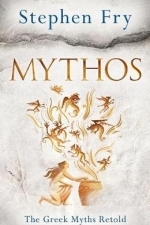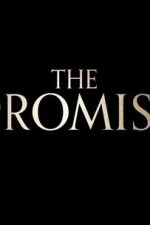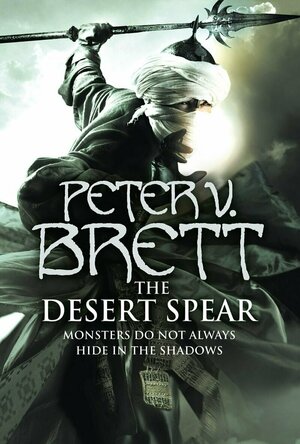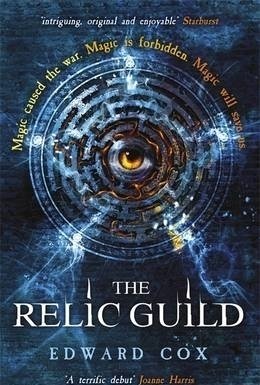Search
Search results
Accessible (2 more)
Simplified
Incredible insight into how much the modern world has taken from Greek and Roman culture
A lot of pretty complex names to remember (1 more)
Constant footnotes (usually at least one per page) to explain certain aspects, or highlight an interesting fact.
Mythos - The Greek legends retold
Ah, what a great read. Stephen Fry writes exactly how you would expect him to, if you've ever heard him speak. He understands the subject matter, and more importantly, realises how easily a reader will be overwhelmed by the sheer amount of players in these myths and answers that problem without condescension.
The book reads as a quasi-novel, from the birth of the universe to the third and fourth generations of immortals (this includes the creators, the titans, the gods, and mythical creatures/characters, spawns of titans and gods, gods and creatures, gods and men and all sorts.) and their adventures, each following on from the other.
I have always had an interest in the Greek myths and gods, and as I suggested above the really interesting part of these stories, beyond the very human nature of the immortals (jealousy, unreasonableness, duplicity, rage, deceit and pride) which makes for so much more of a believable creation theory, is the myriad ways they have influenced English language (any many others I'm sure). To give an example (I'm showing my own ignorance flagrantly here) a simple thing, the alphabet. It never occurred to me, in my own self centered existence, this simply come from the first and second letters of the Greek alphabet. Alpha and Beta. So simple, so obvious, yet I never made this connection.
The stories themselves are wonderful, and the best thing about them is they all tie in with a creation theory. Something, whatever it is, is learned, or created. Some paradigm is set, some moral conundrum is answered, or something in the world is explained by the end of every story told (the tides, the moon, wine, love, soul, war, sex, the seasons, humanity itself just to name a few). It's such an entertaining read, and I find myself telling anyone who will listen some of the revelations I find in this book page on page on page.
As an end note, don't be overwhelmed by the prospect of reading about these stories, this installment ONLY covers from creation, to the establishment of the twelve Greek gods, and their children. It stops before the even greater amount of legends stemming from human demigods (Hercules, Perseus etc) and these are picked up in Fry's most recent offering, Heroes (which I am yet to read).
If you have any interest in the Greek mythology, or etymology, or even history as a whole, this is absolutely one for you.
- Rob
The book reads as a quasi-novel, from the birth of the universe to the third and fourth generations of immortals (this includes the creators, the titans, the gods, and mythical creatures/characters, spawns of titans and gods, gods and creatures, gods and men and all sorts.) and their adventures, each following on from the other.
I have always had an interest in the Greek myths and gods, and as I suggested above the really interesting part of these stories, beyond the very human nature of the immortals (jealousy, unreasonableness, duplicity, rage, deceit and pride) which makes for so much more of a believable creation theory, is the myriad ways they have influenced English language (any many others I'm sure). To give an example (I'm showing my own ignorance flagrantly here) a simple thing, the alphabet. It never occurred to me, in my own self centered existence, this simply come from the first and second letters of the Greek alphabet. Alpha and Beta. So simple, so obvious, yet I never made this connection.
The stories themselves are wonderful, and the best thing about them is they all tie in with a creation theory. Something, whatever it is, is learned, or created. Some paradigm is set, some moral conundrum is answered, or something in the world is explained by the end of every story told (the tides, the moon, wine, love, soul, war, sex, the seasons, humanity itself just to name a few). It's such an entertaining read, and I find myself telling anyone who will listen some of the revelations I find in this book page on page on page.
As an end note, don't be overwhelmed by the prospect of reading about these stories, this installment ONLY covers from creation, to the establishment of the twelve Greek gods, and their children. It stops before the even greater amount of legends stemming from human demigods (Hercules, Perseus etc) and these are picked up in Fry's most recent offering, Heroes (which I am yet to read).
If you have any interest in the Greek mythology, or etymology, or even history as a whole, this is absolutely one for you.
- Rob
Movie Metropolis (309 KP) rated World War Z (2013) in Movies
Jun 11, 2019
Brad Pitt has become one of Hollywood’s best loved actors over the years and it isn’t difficult to see why. His chiselled good looks, slick blonde hair and quiet confidence have all ensured he is never short of work. Here, he teams up with director Marc Forster who helmed the disappointing James Bond sequel, Quantum of Solace, in the latest zombie film to hit the screens; World War Z, but is it any good?
Pitt plays Gerry Lane, a former UN investigator who has chosen the quiet life and retired early to spend more time with his wife and children. Whilst taking his wife Karin and two daughters Rachel and Constance out in the car, they become stuck in heavy traffic which marks the start of the mayhem. From then on this 116 minute thrill ride puts the viewer on the edge of their seat more times than an Alton Towers rollercoaster.
After fleeing the hordes of ridiculously fast and ridiculously terrifying undead, Lane and his family board a US aircraft carrier where they are told they will be safe; however, as always, there is a price to pay. Gerry must start work once again to try and find the epicentre of the zombie virus – otherwise, the entire world will be lost. From here, Gerry’s mission is to travel across the globe trying to find what it is that has infected nearly 100% of the planet’s population.
What plays out could be described as a formulaic horror film, but it is so much more than that. Whilst it’s true that there isn’t enough character development, in fact there is only 5 minutes of it right at the beginning, director Marc Forster has cleverly allowed the audience to make up their own minds about the family’s back story and whether we care if they survive or not.
World War Z is not a film for the faint hearted, and whilst blood and guts are quite sparse for a movie with a 15 certificate, there are some truly terrifying moments, many of which will have your heart pumping through your chest.
There are scenes here that really get the adrenaline flowing, one of which involving a stowaway zombie onboard a commercial jet will leave you biting your lip, grabbing your seat and looking through your fingers in shock, horror and intense excitement. It’s safe to say I came away with very bitten fingernails.
Special effects are on par with some of the better blockbusters of the last couple of years. They aren’t as in your face as those in Transformers, nor as lacklustre as the CGI in I am Legend, they are right in the middle and because the effect is used incredibly subtly, you don’t notice when extras stop playing the zombies and the animators take over.
However, it is in the acting that this film really succeeds. Pitt is fantastic as Gerry Lane, his quiet sense of confidence never turns into arrogance as he fights for survival and this will hold the character in high esteem with audiences. He doesn’t pretend to be an action hero, heck, he even makes the kind of mistakes that any human would do if they were under pressure, and thankfully he does all of this beautifully; his characterisation is absolute perfection. The rest of his family are also excellent, Abigail Hargrove and Sterling Jerins who play Rachel and Constance respectively are very good indeed; you truly believe they are missing their father and cannot wait to see him return. The rest of the cast do very well with the limited roles they have, but let’s not forget that this is a Brad Pitt one-man show and he is more than up to the job.
Unfortunately, the cinematography really lets the film down. There is far too much handy-cam in the first 30 minutes, something which I hate. Directors often use it to sustain a sense of alarm and terror, but Marc Forster has used it to such an extent here that it made me feel physically sick. Moreover, whilst the story is solid, it is nothing more than that, and often the plot takes a back seat to the impressive action pieces meaning that the film seems to go through the motions of 10 minutes plot, 10 action, and so on.
Overall, World War Z is a very impressive film. The sheer scale of the virus means that Marc Forster has utilised some beautiful scenery from across the globe. Whilst it may be slightly too long for a zombie film at just under 2 hours, and have a distinct lack of character development; the impressive story, brilliant acting and very good special effects help lift it above the norm. This is a ride better than any rollercoaster, and is 100% worth the increasingly expensive price of a cinema admission ticket.
https://moviemetropolis.net/2013/06/22/world-war-z-review-2013/
Pitt plays Gerry Lane, a former UN investigator who has chosen the quiet life and retired early to spend more time with his wife and children. Whilst taking his wife Karin and two daughters Rachel and Constance out in the car, they become stuck in heavy traffic which marks the start of the mayhem. From then on this 116 minute thrill ride puts the viewer on the edge of their seat more times than an Alton Towers rollercoaster.
After fleeing the hordes of ridiculously fast and ridiculously terrifying undead, Lane and his family board a US aircraft carrier where they are told they will be safe; however, as always, there is a price to pay. Gerry must start work once again to try and find the epicentre of the zombie virus – otherwise, the entire world will be lost. From here, Gerry’s mission is to travel across the globe trying to find what it is that has infected nearly 100% of the planet’s population.
What plays out could be described as a formulaic horror film, but it is so much more than that. Whilst it’s true that there isn’t enough character development, in fact there is only 5 minutes of it right at the beginning, director Marc Forster has cleverly allowed the audience to make up their own minds about the family’s back story and whether we care if they survive or not.
World War Z is not a film for the faint hearted, and whilst blood and guts are quite sparse for a movie with a 15 certificate, there are some truly terrifying moments, many of which will have your heart pumping through your chest.
There are scenes here that really get the adrenaline flowing, one of which involving a stowaway zombie onboard a commercial jet will leave you biting your lip, grabbing your seat and looking through your fingers in shock, horror and intense excitement. It’s safe to say I came away with very bitten fingernails.
Special effects are on par with some of the better blockbusters of the last couple of years. They aren’t as in your face as those in Transformers, nor as lacklustre as the CGI in I am Legend, they are right in the middle and because the effect is used incredibly subtly, you don’t notice when extras stop playing the zombies and the animators take over.
However, it is in the acting that this film really succeeds. Pitt is fantastic as Gerry Lane, his quiet sense of confidence never turns into arrogance as he fights for survival and this will hold the character in high esteem with audiences. He doesn’t pretend to be an action hero, heck, he even makes the kind of mistakes that any human would do if they were under pressure, and thankfully he does all of this beautifully; his characterisation is absolute perfection. The rest of his family are also excellent, Abigail Hargrove and Sterling Jerins who play Rachel and Constance respectively are very good indeed; you truly believe they are missing their father and cannot wait to see him return. The rest of the cast do very well with the limited roles they have, but let’s not forget that this is a Brad Pitt one-man show and he is more than up to the job.
Unfortunately, the cinematography really lets the film down. There is far too much handy-cam in the first 30 minutes, something which I hate. Directors often use it to sustain a sense of alarm and terror, but Marc Forster has used it to such an extent here that it made me feel physically sick. Moreover, whilst the story is solid, it is nothing more than that, and often the plot takes a back seat to the impressive action pieces meaning that the film seems to go through the motions of 10 minutes plot, 10 action, and so on.
Overall, World War Z is a very impressive film. The sheer scale of the virus means that Marc Forster has utilised some beautiful scenery from across the globe. Whilst it may be slightly too long for a zombie film at just under 2 hours, and have a distinct lack of character development; the impressive story, brilliant acting and very good special effects help lift it above the norm. This is a ride better than any rollercoaster, and is 100% worth the increasingly expensive price of a cinema admission ticket.
https://moviemetropolis.net/2013/06/22/world-war-z-review-2013/
Shaun Quarterman (24 KP) rated The Transformers - The Movie (1986) in Movies
Mar 9, 2020
Robots in disguise
Contains spoilers, click to show
TRANSFORMERS THE MOVIE
This movie is what I like to call a cult classic the first big screen appearance of the Autobots and Decepticons, its appeared after the first two seasons and it shook everything up Transformers as we knew it was over. It starts with a massacre on an Autobot shuttle and many characters died at the hands of Decepticon leader Megatron it shocked me when I first saw this because we had seen two seasons and it was all a bit tame. But the worst was yet to come so let me explain the whole idea of killing off these characters was to make way for future characters and new toy lines we had grown up and loved Ironhide ,and Ratchet, Prowl it definitely threw me the brutality of it shot point blank in the back of the head.
The war continues on Earth and we meet the future of the franchise Ultra Magnus and Hotrod as well as others all made to look futuristic their vehicle modes were Cybertronian which was new and I loved the more space age look about it we meet Daniel Witwicky the son of Spike but there is no sign of sparkplug or an explanation of his whereabouts Carly is Daniels mother. Now comes the part that shocked the world the death of Optimus Prime now let me explain in all versions of Transformers Optimus Prime always dies and the devastating planet Unicron always appears its Transformers lore but this movie defined it I wanted Optimus to destroy Unicron but it wasn’t to be.
Megatron also makes his last appearance with several other Decepticons which evened out the earlier Autobot deaths except they didn’t die they were reanimated by Unicron a new leader was born Galvatron and Cyclonus and Scourge and his dreaded Sweeps then came the death of Starscream it showed the brutality of the new leader, in the first two seasons Starscream would try to overthrow Megatron but he would always get away with it. Galvatron showed no mercy and blasted him straight away.
We are introduced to several new races of Transformers Junkions, Sharkticons and Quintessons all of which have would future appearances in season three and four, we see the friendship blossom between the young Autobot Hotrod and the old warrior Kup and the Dinobots get there action in as well I have always been a big fan of the Dinobots and they save the day again,
The most brilliant thing I had ever seen at the time was the transformation of Unicron a planet to robot I loved the sheer size of it and this final battle brought forth a new leader of the Autobots Rodimus Prime and a new era in Transformers entertainment despite the violence and death it did all make sense plus there are some cameo voices as well Galvatron was voiced by Doctor Spock himself Leonard Nimoy and rodimus prime voiced by Judd Nelson and Unicron was Voiced by orson Wells war of the worlds.
So I must admit this film is a guilty pleasure of mine and I highly recommend it I would advise to watch seasons one and two first just so you can feel how much the movie changed the franchise and the deaths of the characters actually mean more to you so give it a try and see what you think and there is a massive spoiler alert at the end of the movie which is narrated and got the public excited about the next season so enjoy it savour it and soak up this cult classic
This movie is what I like to call a cult classic the first big screen appearance of the Autobots and Decepticons, its appeared after the first two seasons and it shook everything up Transformers as we knew it was over. It starts with a massacre on an Autobot shuttle and many characters died at the hands of Decepticon leader Megatron it shocked me when I first saw this because we had seen two seasons and it was all a bit tame. But the worst was yet to come so let me explain the whole idea of killing off these characters was to make way for future characters and new toy lines we had grown up and loved Ironhide ,and Ratchet, Prowl it definitely threw me the brutality of it shot point blank in the back of the head.
The war continues on Earth and we meet the future of the franchise Ultra Magnus and Hotrod as well as others all made to look futuristic their vehicle modes were Cybertronian which was new and I loved the more space age look about it we meet Daniel Witwicky the son of Spike but there is no sign of sparkplug or an explanation of his whereabouts Carly is Daniels mother. Now comes the part that shocked the world the death of Optimus Prime now let me explain in all versions of Transformers Optimus Prime always dies and the devastating planet Unicron always appears its Transformers lore but this movie defined it I wanted Optimus to destroy Unicron but it wasn’t to be.
Megatron also makes his last appearance with several other Decepticons which evened out the earlier Autobot deaths except they didn’t die they were reanimated by Unicron a new leader was born Galvatron and Cyclonus and Scourge and his dreaded Sweeps then came the death of Starscream it showed the brutality of the new leader, in the first two seasons Starscream would try to overthrow Megatron but he would always get away with it. Galvatron showed no mercy and blasted him straight away.
We are introduced to several new races of Transformers Junkions, Sharkticons and Quintessons all of which have would future appearances in season three and four, we see the friendship blossom between the young Autobot Hotrod and the old warrior Kup and the Dinobots get there action in as well I have always been a big fan of the Dinobots and they save the day again,
The most brilliant thing I had ever seen at the time was the transformation of Unicron a planet to robot I loved the sheer size of it and this final battle brought forth a new leader of the Autobots Rodimus Prime and a new era in Transformers entertainment despite the violence and death it did all make sense plus there are some cameo voices as well Galvatron was voiced by Doctor Spock himself Leonard Nimoy and rodimus prime voiced by Judd Nelson and Unicron was Voiced by orson Wells war of the worlds.
So I must admit this film is a guilty pleasure of mine and I highly recommend it I would advise to watch seasons one and two first just so you can feel how much the movie changed the franchise and the deaths of the characters actually mean more to you so give it a try and see what you think and there is a massive spoiler alert at the end of the movie which is narrated and got the public excited about the next season so enjoy it savour it and soak up this cult classic
Gareth von Kallenbach (980 KP) rated The Lost City of Z (2017) in Movies
Jul 11, 2019
Charlie Hunnam (Sons of Anarchy) stars as the British Explorer Colonel Percival Fawcett, who disappeared on an expedition in search of an ancient city and civilization in the Amazon. The film centers on the true-life adventure of Col Fawcett and his journey to find evidence of a lost people while engaging audiences in the ego and superiority complex that much of western civilization finds itself.
We are introduced to Fawcett as he is an Army Major who seeks to have some sense of distinction and recognition. Seeking notoriety and a sense of honor, Fawcett accepts the task of mapping out disputed territory between Peru and Brazil at the opening of the 20th century in order to prevent war between the two nations.
In his exploits, he is confronted with the exploitation of the indigenous population, extraction of resources, and an untamed land. Upon subsequent journeys and serving in World War I, he is consumed with the need to find a sense of honor in his duty to his nation. Over the course of the film, we begin to see how invested he is in this struggle to learn more about the people and places that he is exploring, however, there isn’t a true connection made between Hunnam’s portrayal and the audience. At times, I found myself not caring about Fawcett’s contributions or career. I could not get invested in his story or his struggle to find a lost city that he believed existed in the wild. By the end of the film, I wasn’t invested in who Fawcett was, what he set out to accomplish, or even his legacy.
One thing that I did find remarkable was that the film helps to expose much of the anxiety and danger that existed during this period and previous expeditions into the region. Additionally, it gave me an appreciation for the endless heights of the human ego, ambition, and drive. The film allows for a critique to emerge about western interference and exploration of the region and the ethnocentrism held by western nations. Lost City of Z is an expansive visual spectacle. The jungle becomes a living, breathing, creature that audiences will connect with, become fearful of, and appreciate. It is the character that carries the film.
The actors and actresses are the background. This aspect allows for the audience to become absorbed by the surroundings and the environment that the characters find themselves in.
The film is beautifully shot and captivating. The sequences are engaging and give the sense of being transported to a foreign, mysterious land that holds secrets that many of us could never comprehend or witness with our own eyes.
We are introduced to Fawcett as he is an Army Major who seeks to have some sense of distinction and recognition. Seeking notoriety and a sense of honor, Fawcett accepts the task of mapping out disputed territory between Peru and Brazil at the opening of the 20th century in order to prevent war between the two nations.
In his exploits, he is confronted with the exploitation of the indigenous population, extraction of resources, and an untamed land. Upon subsequent journeys and serving in World War I, he is consumed with the need to find a sense of honor in his duty to his nation. Over the course of the film, we begin to see how invested he is in this struggle to learn more about the people and places that he is exploring, however, there isn’t a true connection made between Hunnam’s portrayal and the audience. At times, I found myself not caring about Fawcett’s contributions or career. I could not get invested in his story or his struggle to find a lost city that he believed existed in the wild. By the end of the film, I wasn’t invested in who Fawcett was, what he set out to accomplish, or even his legacy.
One thing that I did find remarkable was that the film helps to expose much of the anxiety and danger that existed during this period and previous expeditions into the region. Additionally, it gave me an appreciation for the endless heights of the human ego, ambition, and drive. The film allows for a critique to emerge about western interference and exploration of the region and the ethnocentrism held by western nations. Lost City of Z is an expansive visual spectacle. The jungle becomes a living, breathing, creature that audiences will connect with, become fearful of, and appreciate. It is the character that carries the film.
The actors and actresses are the background. This aspect allows for the audience to become absorbed by the surroundings and the environment that the characters find themselves in.
The film is beautifully shot and captivating. The sequences are engaging and give the sense of being transported to a foreign, mysterious land that holds secrets that many of us could never comprehend or witness with our own eyes.
Gareth von Kallenbach (980 KP) rated The Promise (2017) in Movies
Jul 11, 2019
Roughly a year ago, I found myself in a heated exchange with a friend about full and appropriate representation of people and history in films. I discussed the merits of expanding the scope beyond films about slavery and segregation with respect to African-Americans and stories of despair for other marginalized groups. It is, for me, demeaning to a people’s contributions in society and trivializes experiences. After engaging in what seemed to be an hour, my friend focused more on what she had to say that considering what I was addressing. It proved true when she stated “Well… at least black people have movies about slavery! You should be happy. We don’t even have a movie about the Armenian Genocide!” I was shocked, momentarily. I had never stated that one group deserved more of the spotlight or one’s history is more important that another, just that we need to have appropriate representation and inclusion of stories. All of our stories should be told and shared, especially the ones that are not widely known, understood, or even having a place within social studies courses in our public schools.
I knew of the Armenian Genocide and had a general understanding about the atrocities committed by the Ottoman Empire. There are several international films that address what took place or have the Genocide as part of the story. Even My Big Fat Greek Wedding makes reference to how Greeks were brutalized by the Turks during the period. What we were missing, at least in the realm of American Cinema, was a representation for US audiences to witness the horrors that these people fell victim to and, for some, were able to survive. In The Promise, audiences will get a history lesson about man’s inhumanity to man.
When I first heard that this film was in production, I was interesting in how it would pan out. Would it be truthful, as painful as it may be? Would they overdo certain aspects? How much would they play with the truth? The filmmakers faced the same problems as those who brought forth Schindler’s List, The Pianist, and Life is Beautiful: How do you approach telling the story of genocide? How do you draw people in to a story that they may not be familiar with? Are people ready?
Summaries of the film that I read online made it seem as though this would be an Armenian version of Pearl Harbor in that this was a love story in the foreground of a film that features violence in the background. The summaries were misleading, maybe by design or maybe by mistake. The Promise, stars Oscar Isaac (Star Wars: The Force Awakens) as a young Armenia medical student, and Christian Bale (The Dark Knight) as a journalist for the associated press reporting on developments in the Ottoman Empire as war breaks out. The film whose description touts a love triangle in the midst of the Great War is far from what this films discusses and presents. There is a love story, however, it is not what the film is about or what is able to get the attention of the viewers.
The film reveals the deep held animosity of Armenians and other minority groups in the Ottoman Empire. It demonstrates the depth of mistrust and mistreatment of people who cast as “the other.” It is not simplistic in approach nor relying on over-the-top examples of violence in order for those watching to feel something. The development of events and characters permits the audience to connect with each of the characters, their families, their circumstances, and look for any moment in which they can escape the violence that is being committed to them. In no way does this film minimize what the victims went through. It doesn’t trivialize their experience in order to gain one’s attention.
The Promise satisfies the need for a discussion to emerge allowing for a truer examination of the genocide’s place in world history and within the framing of World War I. It presents a more representative picture of what people bore witness to or experienced themselves. With history, we are continuously searching for the truth and ensuring that history itself does not remained buried or ignored. This films serves the purpose in ensuring that more people are aware of not only the Armenian genocide, but all of the moving pieces that come with people fighting against an injustice or violence that is committed upon them because they are seen as less than or undesirable. It is my hope that with this film, studios see the necessity of bringing more stories of struggle, survival, and the will of humanity to overcome hardship and violence to audiences. The Promise although highly overdue, is essential, poignant, timely, and necessary in order for all of us to see that people are not forgotten.
I knew of the Armenian Genocide and had a general understanding about the atrocities committed by the Ottoman Empire. There are several international films that address what took place or have the Genocide as part of the story. Even My Big Fat Greek Wedding makes reference to how Greeks were brutalized by the Turks during the period. What we were missing, at least in the realm of American Cinema, was a representation for US audiences to witness the horrors that these people fell victim to and, for some, were able to survive. In The Promise, audiences will get a history lesson about man’s inhumanity to man.
When I first heard that this film was in production, I was interesting in how it would pan out. Would it be truthful, as painful as it may be? Would they overdo certain aspects? How much would they play with the truth? The filmmakers faced the same problems as those who brought forth Schindler’s List, The Pianist, and Life is Beautiful: How do you approach telling the story of genocide? How do you draw people in to a story that they may not be familiar with? Are people ready?
Summaries of the film that I read online made it seem as though this would be an Armenian version of Pearl Harbor in that this was a love story in the foreground of a film that features violence in the background. The summaries were misleading, maybe by design or maybe by mistake. The Promise, stars Oscar Isaac (Star Wars: The Force Awakens) as a young Armenia medical student, and Christian Bale (The Dark Knight) as a journalist for the associated press reporting on developments in the Ottoman Empire as war breaks out. The film whose description touts a love triangle in the midst of the Great War is far from what this films discusses and presents. There is a love story, however, it is not what the film is about or what is able to get the attention of the viewers.
The film reveals the deep held animosity of Armenians and other minority groups in the Ottoman Empire. It demonstrates the depth of mistrust and mistreatment of people who cast as “the other.” It is not simplistic in approach nor relying on over-the-top examples of violence in order for those watching to feel something. The development of events and characters permits the audience to connect with each of the characters, their families, their circumstances, and look for any moment in which they can escape the violence that is being committed to them. In no way does this film minimize what the victims went through. It doesn’t trivialize their experience in order to gain one’s attention.
The Promise satisfies the need for a discussion to emerge allowing for a truer examination of the genocide’s place in world history and within the framing of World War I. It presents a more representative picture of what people bore witness to or experienced themselves. With history, we are continuously searching for the truth and ensuring that history itself does not remained buried or ignored. This films serves the purpose in ensuring that more people are aware of not only the Armenian genocide, but all of the moving pieces that come with people fighting against an injustice or violence that is committed upon them because they are seen as less than or undesirable. It is my hope that with this film, studios see the necessity of bringing more stories of struggle, survival, and the will of humanity to overcome hardship and violence to audiences. The Promise although highly overdue, is essential, poignant, timely, and necessary in order for all of us to see that people are not forgotten.
Phil Leader (619 KP) rated The Desert Spear in Books
Nov 12, 2019
The Desert Spear is the second book in the Demon Cycle by Peter V Brett. The first book is The Painted Man which introduces a world where demons rise at night and try to kill people, the only protection from them being to draw 'wards' which the demons are unable to cross.
I approached this second book in two minds. I liked the first book, the concept is excellent and well imagined. The main protagonist is interesting and the directions taken are unexpected. The only let down for me was that apart from the Painted Main himself, I found the other 'main' characters a little less interesting. Leesha's story was interesting and gave insights into Brett's world. However Rojer's story left me cold to be honest, he didn't seem to add very much to the book. I was a little concerned that this second book might be the same for me.
I needn't have worried. The first third of the book concerns the back story of Jardir, a desert warrior prince who appears as a second tier (though instrumental) character in the first book. In this book he is definitely a leading character. He has declared himself the Deliverer and is determined to unite all of humanity under his banner to fight the demons, as has been long foretold. He is determined and quite prepared to take cities by force if required. The back story explains what drives him and also the reasons for his actions in the first book.
Meanwhile the Painted Man is being called the Deliverer by the free peoples of the North, something he strenuously denies. But there can only be one Deliverer and as Jardir encroaches on the North their worlds will come into conflict.
This is a long book - the paperback I read ended on page 750 - and there is a lot to read. Brett is all about character development and there are a lot of characters in this book, some new some returning ones. Rojer is a much better character in this book, possibly because he is not required to carry the storyline but instead can provide a different point of view on events. Leesha is once again a main character and of course the Painted Man plays his part, fighting demons both physical and his own mental demons. There is a lot of dialogue as the story and plot are very much personality driven. There are of course scenes of demon fights large and small but they in no way make up the bulk of the book.
There is another plot strand that I won't give away here but adds more dimension to the demon threat and provides some excellent moments.
The writing is excellent and the characterisation outstanding. This is one of those books which makes you wonder why there is such snobbery in the wider fiction community for 'niche' genres such as fantasy. I would hold the writing and characters from this book against any established classic.
Despite my reluctance to pick this book up, I really enjoyed it and am very much looking forward to the third installment - The Daylight War. It promises to be an absolute corker.
If you liked the first book just for the demon fights and skimmed all the talking and character development in the middle then this is not for you. However if you found at least one character from the first book interesting and worth following, read this book.
I approached this second book in two minds. I liked the first book, the concept is excellent and well imagined. The main protagonist is interesting and the directions taken are unexpected. The only let down for me was that apart from the Painted Main himself, I found the other 'main' characters a little less interesting. Leesha's story was interesting and gave insights into Brett's world. However Rojer's story left me cold to be honest, he didn't seem to add very much to the book. I was a little concerned that this second book might be the same for me.
I needn't have worried. The first third of the book concerns the back story of Jardir, a desert warrior prince who appears as a second tier (though instrumental) character in the first book. In this book he is definitely a leading character. He has declared himself the Deliverer and is determined to unite all of humanity under his banner to fight the demons, as has been long foretold. He is determined and quite prepared to take cities by force if required. The back story explains what drives him and also the reasons for his actions in the first book.
Meanwhile the Painted Man is being called the Deliverer by the free peoples of the North, something he strenuously denies. But there can only be one Deliverer and as Jardir encroaches on the North their worlds will come into conflict.
This is a long book - the paperback I read ended on page 750 - and there is a lot to read. Brett is all about character development and there are a lot of characters in this book, some new some returning ones. Rojer is a much better character in this book, possibly because he is not required to carry the storyline but instead can provide a different point of view on events. Leesha is once again a main character and of course the Painted Man plays his part, fighting demons both physical and his own mental demons. There is a lot of dialogue as the story and plot are very much personality driven. There are of course scenes of demon fights large and small but they in no way make up the bulk of the book.
There is another plot strand that I won't give away here but adds more dimension to the demon threat and provides some excellent moments.
The writing is excellent and the characterisation outstanding. This is one of those books which makes you wonder why there is such snobbery in the wider fiction community for 'niche' genres such as fantasy. I would hold the writing and characters from this book against any established classic.
Despite my reluctance to pick this book up, I really enjoyed it and am very much looking forward to the third installment - The Daylight War. It promises to be an absolute corker.
If you liked the first book just for the demon fights and skimmed all the talking and character development in the middle then this is not for you. However if you found at least one character from the first book interesting and worth following, read this book.

For Crying Out Loud: The World According to Clarkson: v. 3
Book
Jeremy Clarkson, shares his opinions on just about everything in For Crying Out Loud. The...
Hazel (1853 KP) rated The Relic Guild in Books
May 30, 2017
Illegal Magic
I received this book for free through Goodreads First Reads.
Edward Cox invents a new magical world in his epic fantasy novel The Relic Guild. Magic is a thing of the past. Since a great war forty years previously, magic has been banned. Back in the day the Relic Guild was made up of people with various magical abilities – empaths, illusionists, changelings – but a great war got rid of all those with magic, all but three that is. Marney, Samuel and Van Bam are the only surviving agents of the Relic Guild. In their old age they have not needed to use their abilities that much until evidence that a particular infamous Genii, Fabian Moor, did not perish as he was thought to have done. Moor kidnaps Marney leaving Old Man Sam and Van Bam to hunt him down with the help of a young changeling, Peppercorn Clara, who, until now, had been hiding her illegal magical gift.
It took a long time to get into the novel and understand what was going on. It was confusing as to who was good and who was bad at the very beginning, which did not help in understanding the events occurring. Approximately half way through the pace picked up and became a lot more exciting and easier to engage with. It helped that the narrative alternated between the present and forty years earlier. By providing an insight into history of the Relic Guild the current situation began to make more sense.
Oddly the book begins with an epilogue. Initially I wondered whether that was intentional – maybe parts of the story were to be told backwards – however, on finishing the final chapter it appears that, perhaps, it was an error. There were also a few other mistakes that were obviously missed during the proof readings.
The ending of the story strongly implies that there is more to come. This felt a little annoying as there was no conclusion to, what felt like, an extremely long and slow starting book. I am undecided whether I would want to read a sequel; whilst it would be nice to find out how the situation is resolved, it was not the easiest of books to read. It was also difficult to visualize the setting, particularly the constant reference to a labyrinth.
Overall it was a bit of a disappointment. The blurb set it up to be a really gripping storyline but in reality it was confusing and hard going.
Edward Cox invents a new magical world in his epic fantasy novel The Relic Guild. Magic is a thing of the past. Since a great war forty years previously, magic has been banned. Back in the day the Relic Guild was made up of people with various magical abilities – empaths, illusionists, changelings – but a great war got rid of all those with magic, all but three that is. Marney, Samuel and Van Bam are the only surviving agents of the Relic Guild. In their old age they have not needed to use their abilities that much until evidence that a particular infamous Genii, Fabian Moor, did not perish as he was thought to have done. Moor kidnaps Marney leaving Old Man Sam and Van Bam to hunt him down with the help of a young changeling, Peppercorn Clara, who, until now, had been hiding her illegal magical gift.
It took a long time to get into the novel and understand what was going on. It was confusing as to who was good and who was bad at the very beginning, which did not help in understanding the events occurring. Approximately half way through the pace picked up and became a lot more exciting and easier to engage with. It helped that the narrative alternated between the present and forty years earlier. By providing an insight into history of the Relic Guild the current situation began to make more sense.
Oddly the book begins with an epilogue. Initially I wondered whether that was intentional – maybe parts of the story were to be told backwards – however, on finishing the final chapter it appears that, perhaps, it was an error. There were also a few other mistakes that were obviously missed during the proof readings.
The ending of the story strongly implies that there is more to come. This felt a little annoying as there was no conclusion to, what felt like, an extremely long and slow starting book. I am undecided whether I would want to read a sequel; whilst it would be nice to find out how the situation is resolved, it was not the easiest of books to read. It was also difficult to visualize the setting, particularly the constant reference to a labyrinth.
Overall it was a bit of a disappointment. The blurb set it up to be a really gripping storyline but in reality it was confusing and hard going.
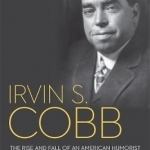
Irvin S. Cobb: The Rise and Fall of an American Humorist
Book
"Humor is merely tragedy standing on its head with its pants torn." - Irvin S. Cobb Born and raised...

Murder at the Mena House
Book
Well-heeled travelers from around the world flock to the Mena House Hotel—an exotic gem in the...
